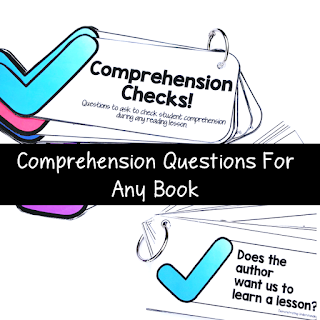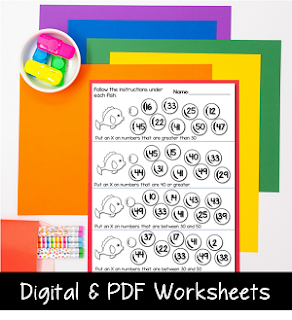It happens every day. We all have 5 minutes here and there during our day in the classroom that we need to fill, and we want to find meaningful ways to fill that 5 minutes. We want to make the most of those minutes, so it is important to find activities that are both educational and quick. I am here to help!

5 Meaningful Ways to Fill 5 Minutes in the Classroom
It happens every day. We all have 5 minutes here and there during our day in the classroom that we need to fill, and we want to find meaningful ways to fill that 5 minutes. We want to make the most of those minutes, so it is important to find activities that are both educational and quick. I am here to help!

Celebrate Thanksgiving in the Classroom with a Thankful Card and Craftivity
Thanksgiving is here again, and we all have turkey on the mind. I love using Thanksgiving themes in Art and any other area of the curriculum that I can easily integrate.

12 Ways to Teach using Play Doh!
Play-doh is something every child loves to play with. Have you ever thought about using that love to excite your students and use it to teach? There are so many possibilities and all of these ideas really help our kinesthetic learners. Today I am sharing 12 ways you can use play-doh in the classroom during your math and literacy times.
0

Simple Centers for Back To School
It's time to think about preparing for Back to School. I do not return until after the Labor Day weekend but I know many of you have already started or will be back in your classroom shortly. I am fortunate to be part of an amazing group of teacher bloggers and it is our mission to bring you some great Back to School Freebies and tips.
1

How to Effectively Practice Sight Words
So you have a word wall, and you are not sure what to do with it!
Well, you are in the right place. Putting up a word wall in your room is pointless if you don't teach your students how to use it. That requires you to show HOW to use the word wall. In this post, I am going to give you lots of suggestions for using the word wall with your students, which leads to them gaining independence. The best part is that it doesn't have to take a lot of time.
4
Well, you are in the right place. Putting up a word wall in your room is pointless if you don't teach your students how to use it. That requires you to show HOW to use the word wall. In this post, I am going to give you lots of suggestions for using the word wall with your students, which leads to them gaining independence. The best part is that it doesn't have to take a lot of time.

A Surefire way to Teach Students to Read and Spell Tricky Words
Do your students get stuck when reading and spelling tricky words? My students got hung up on those rule breaker words ALL THE TIME. What if I could show you a way to make sure those words were always spelled right? Continue reading to learn how I introduce my words each week and more about how I use a Word Jail or Doghouse to establish dedicated practice for rule breaker words.

Getting Started with a Word Wall in the Primary Classroom
Do you use a Word Wall? I think that a Word Wall is an essential part of a primary classroom and WELL worth the wall space that it takes up. There has been a lot of debate in recent years about the merits of a Word Wall. I feel strongly that it is a necessity, but I also feel strongly that it is only beneficial if you TEACH kids how to use it.

5 Cheap & Easy Ways to Make the End of the School Year Memorable
It's the end of the school year. You're tired, and you don't have money to spend on a big end of year celebration. All is not lost! Pick your head up off your cluttered desk and read on to find 5 cheap and easy ways that will give your students a memorable end of the year and won't cost you a fortune.

Honest Advice for Teachers
This is an open letter to those teachers who, like myself, have been teaching for a while and can see the end of their career coming.
Dear Teachers,
I am here to share with you my insight after teaching for 22 years. Perhaps you feel the same way as I do or perhaps you have a ways to go in your career. Either way, I hope you gain something from this letter and leave a little more inspired and comfortable in your own teaching.
You have been teaching long enough to see trends come and go and then come back again. What is new to some you recognize as a re-packaging of something that was "new" earlier in your career. This is your opportunity to step up and share your knowledge and let people learn from your experiences. Resist the temptation to point out that this trend, whatever it may be, is old news. Take the lead.
You have been teaching long enough to also know that you don't need to jump on the bandwagon of every new thing that comes down the line. You have experience on your side and "know" what works for kids. If there is a choice, pick and choose what you know will work best for kids and quietly leave it at that.
You have been teaching long enough that you can see that retirement date in the not so distant future. For me it is under 10 years now. I have 22 years of teaching under my belt. I believe that is quite an accomplishment. As each new year dawns I hope you feel the same excitement of setting up your room and preparing for a new group of students. I hope you continue to love coming to work each day and teaching and learning with your students. You are at a point in your career when you can see the end but you are enjoying the ride until you get there. Embrace the journey!
Click on any of the links below to visit the blog post about each of these other teachers. Chances are you'll be in one of these shoes sooner than you realize!
~An Open Letter to a New Teacher
~An Open Letter to the Teacher in the Prime of her Career
~An Open Letter to a Teacher in a Rut
~Open Letter to the Retired Teacher

How to Make a DIY Schedule Board for your Classroom
Staying organized is a must in the classroom. I like to be able to see what is happening for the week at a glance. Sometimes my plans are buried under all the "stuff" that accumulates on my desk (OK, most of the time, if I am being honest) and I have to dig around to check my schedule for upcoming items. This DIY schedule solves the problem of my messy desk!
What you will need:
~Dollar Store frame
~Scrapbook papers
~Letter stickers or vinyl and a Silhouette cutting machine
I found this picture frame at my local Dollar Store for $3.00. I wanted the inserts to match the colours in my room so I headed to Michaels to find matching scrapbook paper. My final step was to cut out the vinyl letters for each of the days of the week using my Silhouette Cameo. For under $5.00 I created a functional and attractive schedule board.
Now each week I use a dry erase marker to jot down important events. I also have a code for my duties. That is what the R and L indicates. We are on a rotating day system as well, so I can glance at my schedule to remind myself what "day" it is.
Pin this picture to help you remember and consider making yourself one over the summer! Check out some other great teacher tips over at Mrs. Beattie's Classroom. I am linking up with her this week and sharing this little project.

4 Ways to Use Drawer Organizers in Your Classroom
Do you struggle to stay organized in your classroom throughout the week with your copies and lesson materials? If so then I may have just the organizational solution for you!
I am linking up with Erin at Mrs. Beattie's Classroom again this week. This time I am sharing how I use drawers to organize various things in my classroom.
I love drawer organizers. The first one I found and made for my classroom has truly been a lifesaver. You have probably seen similar ones on Pinterest.
Sometimes it was a struggle to keep everything together for my lessons so when I saw this idea I was excited. It has truly helped me stay organized. These drawers are slightly larger than the conventional paper sized drawer, which is great for adding books and other things for your lessons. This is 2 sets of 3 drawers stacked together. I believe they are made by Sterlite. I added the lettering using my Silhouette Cameo, but you could easily use peel and stick letters, too.
I don't know about you but there are always pens, pencils, highlighters etc floating around on my desk or collected in various cups. I started looking for a way to collect all of those supplies into one place. Pinterest to the rescue again! I found this hardware cabinet at Lowe's and repurposed it using labels I found on Teachers Pay Teachers. Voila! A functional storage system for all the desktop paraphernalia. Substitute teachers love it too because they can always find what they are looking for.
My first graders seem to lose their crayons ALL...THE...TIME. They were always coming to me looking for missing colours. I solved that problem with, you guessed it, another drawer organizer! This one was thrown together hastily, so there is no pretty labels on it. I had planned to rectify that but as you can see, it hasn't happened. There is always next year, :). My students put crayons there that they find on the floor and go there when they are missing a colour. When I give students a new box of crayons I often go through their table baskets and move some of those crayons to the extras.
My last drawer organizer is a favourite with teachers from Staples. I have seen it used for many different things but I use mine to store all my additional supplies. Again, my substitute teachers love it as they can quickly find extras for students when they lose things. It is amazing how much gets "lost" when I happen to be away.
Do you use drawer organizers in your classroom? If so how do you use them? I am always looking for new ideas. You can never have too many drawer organizers! :)
Looking for more organization ideas? Check out my Classroom Organization Pinterest Board for more ideas.

A Simple Classroom Management Strategy for Lining Up
Do your students struggle at line up time? Do they have a problem leaving enough space for others or crowd together so that everyone ends up pushing and shoving? This group of firsties has been particularly challenged with lining up.
I am linking up with my good friend Erin at Mrs. Beattie's Classroom for a new weekly blog series.

How to Use Cereal Boxes to Teach Media Literacy
Teaching Media Literacy to young children can be a challenge, so use something they are familiar with to get them hooked. Get students looking at cereal boxes with intention, and they will notice lots of media elements that they never saw before. I created this Cereal Box Media Literacy Unit to teach those expectations in a fun way, and in a way, I can tie in the Health curriculum as well.
0

A Simple Strategy to Review Sight Words
Are your student's struggling to learn their sight words? Would you like an easy to use system with those student's that targets just the words that they need?
I am blogging over at Who's Who and Who's New and sharing about how I use my free Word Wall Words flip books to do just this. You can read all about it by clicking here:
Until next time,
0
I am blogging over at Who's Who and Who's New and sharing about how I use my free Word Wall Words flip books to do just this. You can read all about it by clicking here:
Until next time,

How To Use Whiteboards To Get Students Excited About Learning
Using whiteboards with your students is a sure fire way to increase student engagement. It has been my experience that any task that involves writing is always better when done on a whiteboard!
Do you love to use whiteboards in the classroom? Are you looking for a few more ways to integrate them into your day? If you answer yes to either question then you should check out my guest post on the Education to the Core blog where I share my favourite tips and tricks with whiteboards in the classroom. Click on the image below to visit the blog and check out my post.
Until next time,

Tips for Using Picture Books to Teach Inferring
This month I want to share a bit about how I begin teaching about inferring. I love to teach about inferring because I can hook the kids with the idea of being a detective - we search for clues in the pictures and in the text and put it with what we know (our schema) to infer. We make an anchor chart to help us remember what we do to infer.

Snowball Saver STEM Project
I am super excited to be blogging tonight. You may have seen my posts on Facebook, Twitter or Instagram and made your way here, so welcome. Stick around to hear all about something I dreamed up to do with my students in response to our work with The Snowy Day by Ezra Jack Keats.
4
Introducing the Snowball Saver! What is a snowball saver? Well, we have spent the last two weeks working with the book The Snowy Day. As you will know, near the end of the story Peter's snowball melts, after he leaves it in his coat pocket. My first graders giggled and said that Peter was really silly to put it in his pocket. This lead to a discussion about what he could have done instead. There were lots of suggestions that he should have put it in the freezer.
This got me thinking about how to turn this wondering from my students into a challenge we could work on. We spent some time talking about how we could keep a snowball in our classroom. Could we make something to store it in? My students paired up and started brainstorming what they could make or build. Some of their ideas were crazy and far fetched, like building a refrigerator and using concrete blocks to build a cold room in the classroom. I figured I needed to help them be slightly more realistic in their thinking. To do this we watched a great little video about making a "keep a cube" container, which is essentially the same thing. Here is the link to the video on Youtube:
This got them moving in the right direction. I sent home a note to families with a few suggestions that most of the students came up with and then they added items to the list if there were other things they needed from home. This ensured we had a good selection of found materials to build with.
This morning I set out the collection I brought in. I knew some would forget and some would not have anything to contribute. Many children did contribute the class collection and we ended up with many more materials with which to build.
We gathered on the carpet and I went over the steps we were going to follow in order to be real scientists investing the problem or challenge: Can you keep a snowball from melting in our classroom? The first thing partners did was gather their materials and make a materials list.
Once partners were done with planning out their Snowball Savers they got to work creating it. This part was fun but very messy. There was paper, foil and lots of other random things everywhere, but everyone was engaged and they were having a blast.
Now that the Snowball Saver was ready it was time for the snowball. Up until this point the snowballs were all sitting in a cooler outside staying cold. Before they were able to put them inside their Snowball Saver, they needed to measure the diameter of their snowball so they had something to reference at the end, if the snowball did not melt. They loved handling the cold snowballs and were very gentle so that they did not break apart.
As soon as students got their snowballs I put our "control" snowball in a dish in the classroom. We needed to see how fast it melted out in the open in order to compare to our protected snowballs.
After the snowballs were safely tucked away it was time to draw a labeled diagram of the Snowball Saver. Next, partners wrote the steps they followed in order to build their Snowball Saver, just like a real scientist.
This process took us all morning. Two hours after we started we took a look at our "control" snowball and it was almost melted, so it was time to check on our Snowball Savers. The results might surprise you! The results certainly surprised them.
Almost all of the snowballs were still intact and only a few had started to really melt. We decided if there was water in the container or on the wrap that they used around it then it was melting. They were totally blown away by the results. Only 1 of the Snowball Savers had a fully melted snowball.
This is the one that showed no signs of melting. It generated a lot of conversation as did the ones where the snowball was wrapped up with multiple layers of things like waxed paper, plastic wrap, newspaper, tinfoil etc. Why did the snowball in a styrofoam container not melt at all? How about the ones wrapped in of layers? Lots of great questions were asked.
I deem this project a total success. It incorporated so many aspects of the curriculum and generated amazing conversation with the students. It touched on the following curriculum areas:
~ measurement
~ 3D Shapes
~ Science - matter/materials/fasteners
~ Science - structures
~ Writing - writing How to, creating a labeled picture or diagram, sequencing.
Another possibility to link it to Oral Communication would be to interview students and have them explain their choices and why they think that their Snowball Saver will keep the snowball from melting.
I hope you enjoyed this peek into my room at my first STEM inquiry. This is now available in my store. Click on any of the pictures to be taken to my store.
I would love to hear your thoughts on this project. Please comment below. Thanks so much for stopping by.
Until next time,

Get your Graph On!
Thanks for stopping by! I have a lot going on in the classroom right now and I am having a hard time getting inspiration to blog. Tonight it struck me that I should just keep it simple and talk about what we have been doing during our Graphing unit lately. Get ready for a practical post!
Graphing is a skill that usually comes fairly quickly for students. They work on it a lot in Kindergarten. When teaching it I always start with concrete graphs - we make graphs with ourselves which the kids love! We look at our clothing, our hair, our shoes etc and sort ourselves out and make a graph using the tiles on the floor as the spaces to stand on. Next, we pull out the math manipulatives and start making concrete graphs at the tables. I like to use a ruler as a 'starting line' so that students can clearly see where the objects go.
Collecting primary data is another skill that requires a lot of practice and I do a lot of whole group work around that skill to prepare them for asking their own questions and conducting a survey. I like to make the surveys applicable to our classroom lives so students see the real reason for doing this in real life. Recently, we maxed out our champ on Go Noodle (we love that site) and needed to choose a new champ. This was a great opportunity to conduct a survey.
After lots of whole group opportunities I introduced centers for independent practice. During this time I work with one group of students while the others are working at their centers. We always spend a day exploring the centers beforehand to make sure that "most" students can be independent. I try to ensure there is at least 1 "teacher" who can help those who are stuck, in each group.
My Grab and Graph center is another center we use to practice making a concrete graph, then a bar graph. At the bottom there is opportunity to practice communicating about the graph to explain what the data tells. There is little reading to be done on the page so it makes it easier for your early readers and writers to complete with independence.
0
Graphing is a skill that usually comes fairly quickly for students. They work on it a lot in Kindergarten. When teaching it I always start with concrete graphs - we make graphs with ourselves which the kids love! We look at our clothing, our hair, our shoes etc and sort ourselves out and make a graph using the tiles on the floor as the spaces to stand on. Next, we pull out the math manipulatives and start making concrete graphs at the tables. I like to use a ruler as a 'starting line' so that students can clearly see where the objects go.
Collecting primary data is another skill that requires a lot of practice and I do a lot of whole group work around that skill to prepare them for asking their own questions and conducting a survey. I like to make the surveys applicable to our classroom lives so students see the real reason for doing this in real life. Recently, we maxed out our champ on Go Noodle (we love that site) and needed to choose a new champ. This was a great opportunity to conduct a survey.
After lots of whole group opportunities I introduced centers for independent practice. During this time I work with one group of students while the others are working at their centers. We always spend a day exploring the centers beforehand to make sure that "most" students can be independent. I try to ensure there is at least 1 "teacher" who can help those who are stuck, in each group.
Graphing boxes are one of my centers. There is a collection of boxes filled with small items: erasers, beads, pom poms, gems etc. The Dollar Store is the perfect place to find things to add your graphing boxes. The students create the concrete graph with the objects and then translate that information into a bar graph or picture graph.
 |
| Grab and Graph Math Center |
My Spin and Graph centers are also a big hit since they involve using dry erase markers. Everything is more fun with markers, according to my students. The worksheets for this center involves a bit more writing so it is perfect for those students that are ready to handle more writing. Some of my non-writers often draw the picture on the line to communicate their thinking.
 |
| Spin and Graph Match Center |
Would you like to see what we did next? Head to the second installment of Get Your Graph On over {HERE}
Before you go I wanted to share with you a graphing freebie that we will be using in a few weeks on Valentine's Day. I love, love, love it! It really gets kids to slow down and look at their valentines. In the past I was disappointed in the way the kids rummaged through their cards in search of treats and other special things. Last year they contentedly looked through their cards, made judgements about what category worked best and completed their graph. It was a proud teacher moment. Click on the photo to head over to my store to download it.
Until next time,
Subscribe to:
Posts (Atom)


















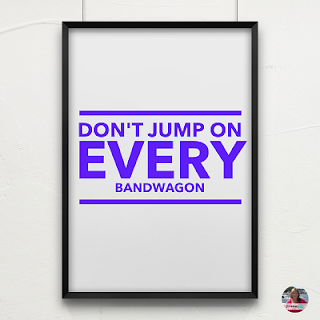
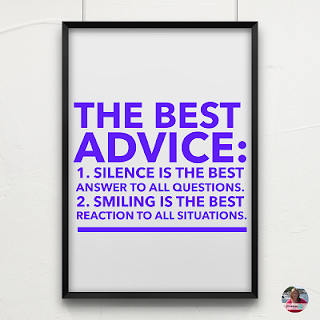
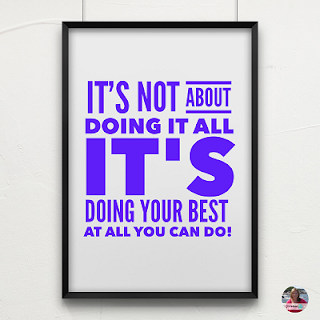











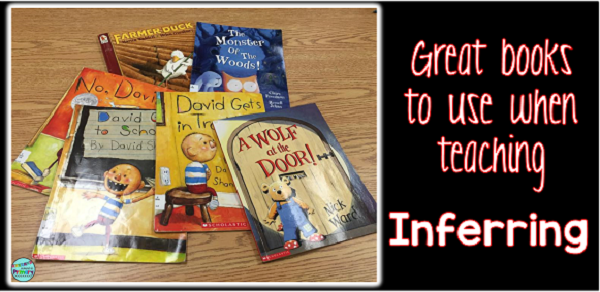








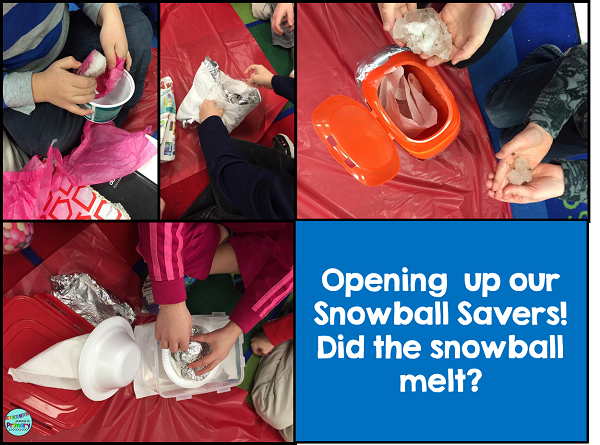












.png)



